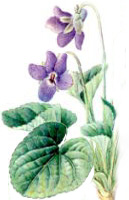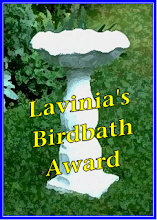
my photos
BASKING IN OCTOBER SUNSHINE
Monty Don said on Gardener's World this evening that he's been pleased with how his Dahlias have done this year, and so have I.
The one above is Happy Princess, one of the five dark-leaved varieties I ordered from Unwins at the beginning of Summer.
Ordered at the same time were plugs of New Guinea Impatiens, which I planted four in a trough. Usually this is the time of year to turf out the Summer bedding, but I can't do much at the minute as they are still flowering away like mad! These are great value plants, which are tolerant to a bit of drought and sun.

This beautifully structured nest came out of one of our neighbour's trees. The bronze leaves on top are from the shrub/tree Amelanchier. Does this nest belong to a Crow or Magpie, anyone know?
I've been secretly longing for this monstrosity of a conifer to come down, at least the top section anyhow. Magpies seemed to favour it, and the sound of a magpie is not the kind of birdsong I want to be hearing at any time of the day.
I shall miss the little Dunnock though, who did like to sit right at the very top and sing it's little heart out!

I've seen an increase in Red Admirals in my garden this year, four together on Michaelmas Daisy. Even today there was one catching up on last minute nectar from Verbena B.
Other plants they've favoured over the summer months have been Giant Scabious and Cosmos.
I know their caterpillars like to feed on nettles, so I keep a big patch in an unused spot at the top of the garden. The butterflies like to feed on apples, so leave out some windfalls if you have them.

This fern looks especially lovely in Autumn light. I've a few different varieties planted in part shade around the base of a tree.
We were down in Somerset for a few days this week, and on a cycle ride I noticed the edge-ways were covered with Harts Tongues. The first time I've ever happened to see so many growing together in the wild.

My garden this year has again been filled with many different varieties of bee. Most of them I'm not familiar with, but I'd be interested to learn more about them in the future.
The small one above is on another one of those Dahlias, this time Happy First Love. This variety has almost a paint-brushed effect on the petals.
Sadly all five are coming to an end now, but I shall try my very best to overwinter them, but cannot promise any success?
.



































































































